How To Clean A Rusty Saw Blade
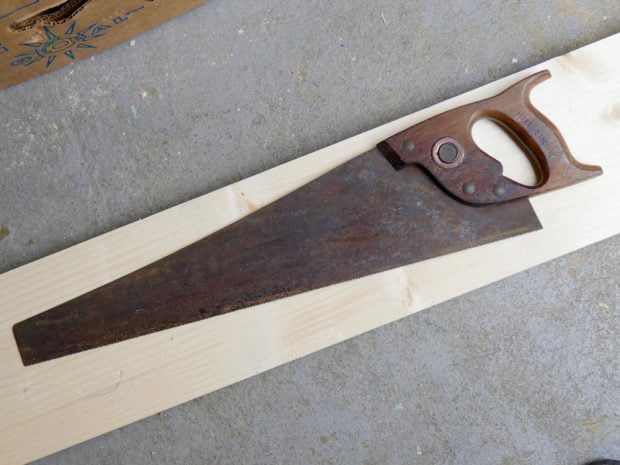 It's hard for me to imagine but I remember when the saws I'm discussing a little here below came into being in the late 1960s and early 1970s in the UK. It was a new era that somehow seemed by some a necessary step to counter the status quo of the pre-war culture of quality and it successfully removed the kind of quality we were used to from what was then the modern post war era of plenty. I see now how this period resulted as the era of change for change's sake, good or bad, progressive or retrogressive. It paved the way for us to accept changes without questioning consequences because in the interests of progress it didn't take much to class you squarely as the proverbial small-minded Luddite. The let down on these saws was the same letdown you find when you go into any convention centre or government office and school anywhere in the world. There is a sameness about chairs and tables that stack and fold that you just can't get away from. So it is with saw handles designed for a 20 second rout out on a CNC machine and a flap sander or an plastic injection moulder. Quick, efficient and totally soulless. Not much for celebration, but celebrate they did. I was one of those all-accepting teenagers that quietly celebrated the era even though I couldn't at that time imagine what the mechanism was that so destroyed the depth of care makers in the 1800s put into developing tools to fit a man's hand and the work so very perfectly. The issue was that two world wars conditioned people to not question change and certainly not to complain. Looking at what we have today in the average saw handle pumped out with all of the technology available to us and I think makers on every continents should be ashamed. I still wonder what they were thinking.
It's hard for me to imagine but I remember when the saws I'm discussing a little here below came into being in the late 1960s and early 1970s in the UK. It was a new era that somehow seemed by some a necessary step to counter the status quo of the pre-war culture of quality and it successfully removed the kind of quality we were used to from what was then the modern post war era of plenty. I see now how this period resulted as the era of change for change's sake, good or bad, progressive or retrogressive. It paved the way for us to accept changes without questioning consequences because in the interests of progress it didn't take much to class you squarely as the proverbial small-minded Luddite. The let down on these saws was the same letdown you find when you go into any convention centre or government office and school anywhere in the world. There is a sameness about chairs and tables that stack and fold that you just can't get away from. So it is with saw handles designed for a 20 second rout out on a CNC machine and a flap sander or an plastic injection moulder. Quick, efficient and totally soulless. Not much for celebration, but celebrate they did. I was one of those all-accepting teenagers that quietly celebrated the era even though I couldn't at that time imagine what the mechanism was that so destroyed the depth of care makers in the 1800s put into developing tools to fit a man's hand and the work so very perfectly. The issue was that two world wars conditioned people to not question change and certainly not to complain. Looking at what we have today in the average saw handle pumped out with all of the technology available to us and I think makers on every continents should be ashamed. I still wonder what they were thinking. 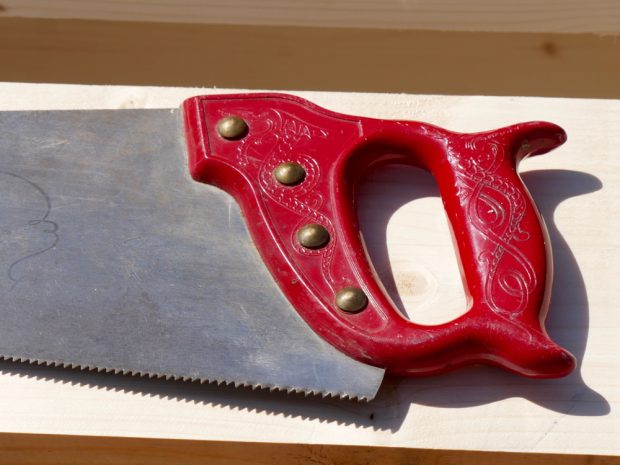 I believe Sandvik had already introduced their plastic handled versions that saw the demise of wooden handles for decades at the same era. Actually I bought my first Sandvik at that time and have used it for five decades almost. It is not at all uncomfortable and the saw itself, the steel plate, is truly an excellent saw choice secondhand. I can't really say the same for their modern-day versions.
I believe Sandvik had already introduced their plastic handled versions that saw the demise of wooden handles for decades at the same era. Actually I bought my first Sandvik at that time and have used it for five decades almost. It is not at all uncomfortable and the saw itself, the steel plate, is truly an excellent saw choice secondhand. I can't really say the same for their modern-day versions.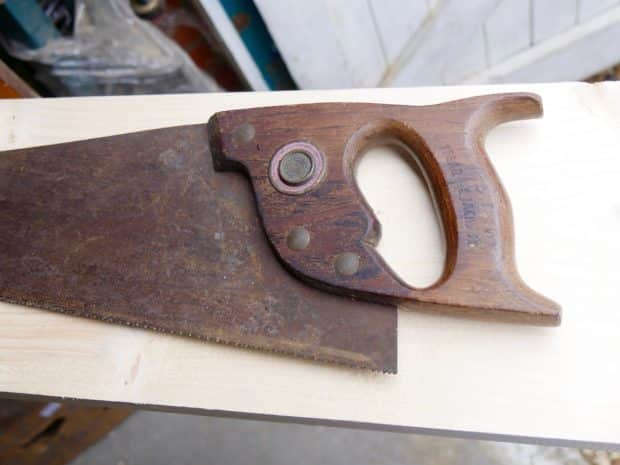
Someone very kindly asked if the saw above was of use to me. Of course in the condition I saw it it was not, but I knew exactly what it was and even with a bowed blade I knew I could fix it back up to become a good user in an hour. The rust was caked on and though it looked old I don't think it was actually used much, seeing that the saw plate was still full size. I suspect it's one of those saws that was used until it would cut no more and then left to the atmosphere to slowly but surely decline. That said, though there is much rust on the plate and the varnish is all but gone from the handle, the saw was one that was getting rarer and rarer to find and it is one I have always liked. This is one of the Spear & Jackson double-century celebration saws to mark 200 years of saw making back in the lat 1960's. S&J claim to be the oldest saw makers in the world, but of course that's not true. Saws date back millennia. For some of that series S&J used Rosewood for the handles so this one will serve as a user for me and the students, apprentices and so on.
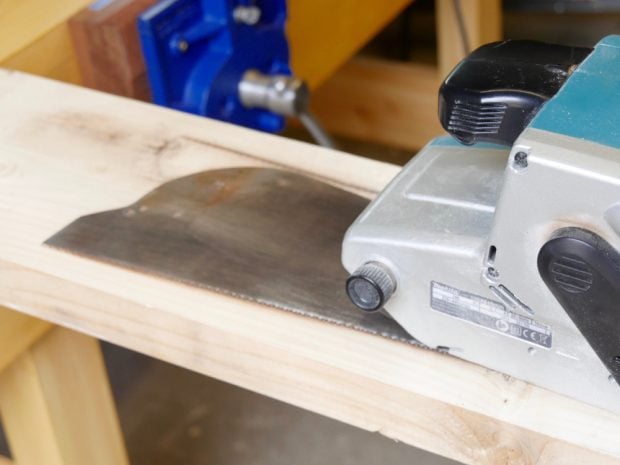
First of all when the plate rust is this thick I usually will use a belt sander to get through it first. Safety is an issue everyone, so I will say that up front. Heat builds up and so too at high speed sparks of metal can be carried into the bag. Best to do it outside and take the bag off otherwise the sparks can smoulder inside the bag nestled quietly amongst the sawdust and a few hours later the shop is burned down. So consider these things first. With the right precautions you will be fine. Keep the speed down, change out the belt if needed and the plate will look like new in a few minutes.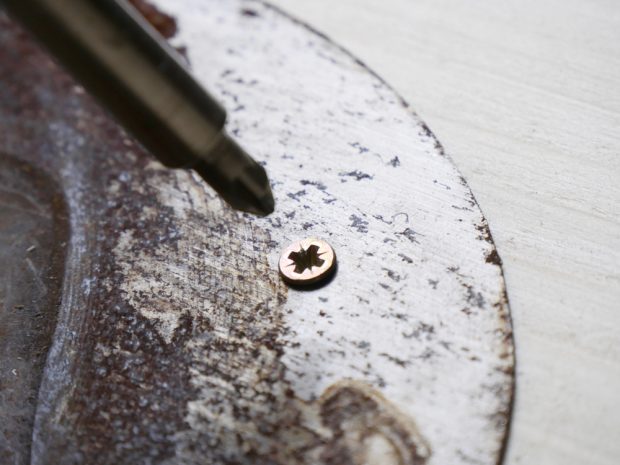
I removed the handle and put a couple of small screws through the holes in the saw plate into a backer board to hold it safely and flat. Take care not to roll the belt sander into the teeth but keep it flat to the plate otherwise you will taper grind the plate the wrong way and the teeth will be narrower than the plate in seconds. You can of course avoid the teeth and just not touch them at all. I used a 100 grit belt followed by a 180 grit one. This is plenty smooth when done. I would never do this on a plate that doesn't need it. A light film of rust comes away with just abrasive paper and a block just fine.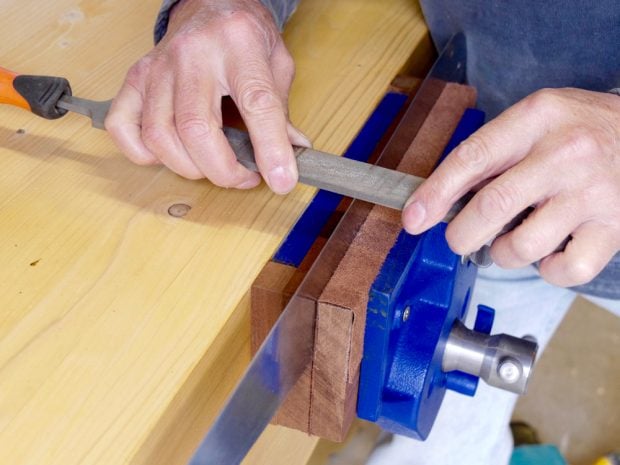
The back edge of the plate looked as though it had been hammered or used as an ax so I draw filed the edge to a clean edge again. This is simply a method of pulling or pushing the flat file perpendicular to the plate in both directions. 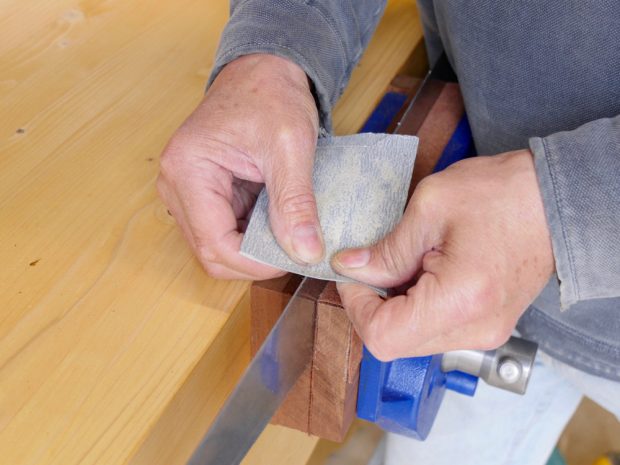 I soften the corners with abrasive paper too. Apply some light oil when done to prevent rust again and use the saw regularly to keep the plate in good condition.
I soften the corners with abrasive paper too. Apply some light oil when done to prevent rust again and use the saw regularly to keep the plate in good condition.
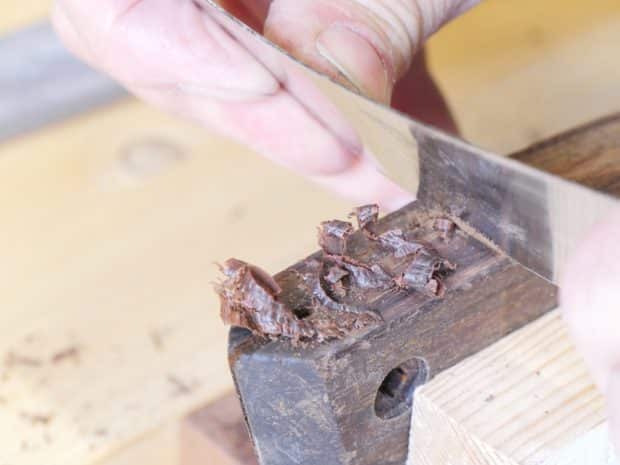
I used a card scraper to remove the surface defects and the old varnish and also to remove the hard edges left from the manufacture. 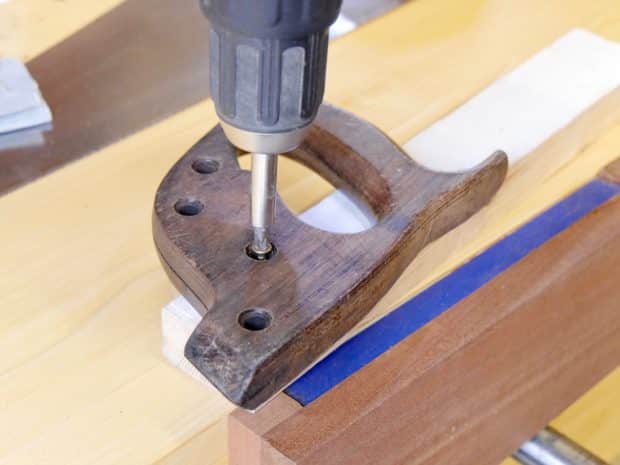 I passed a screw through one of the handle holes into a block of wood to hold it in the vise for some of the work.
I passed a screw through one of the handle holes into a block of wood to hold it in the vise for some of the work.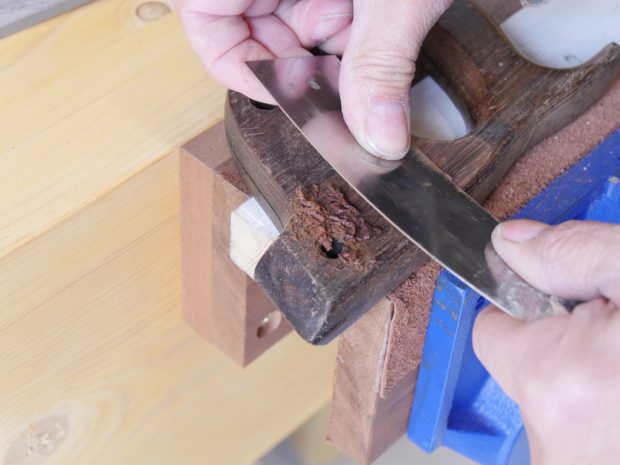 I then sanded the wood to even out any scraper marks after scraping.
I then sanded the wood to even out any scraper marks after scraping. 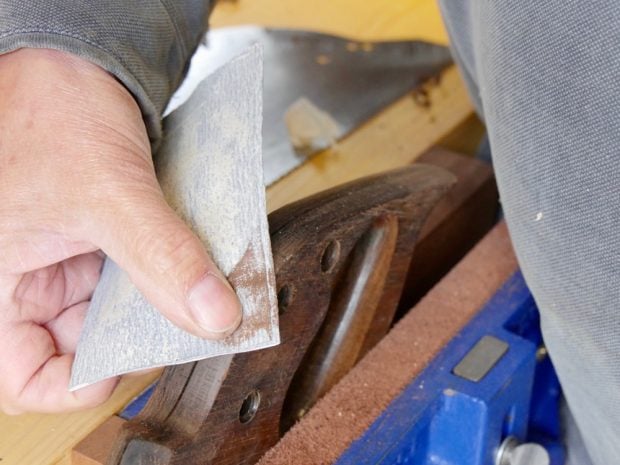 The ends of the horns were scuffed from dropping so I filed them smooth.
The ends of the horns were scuffed from dropping so I filed them smooth.
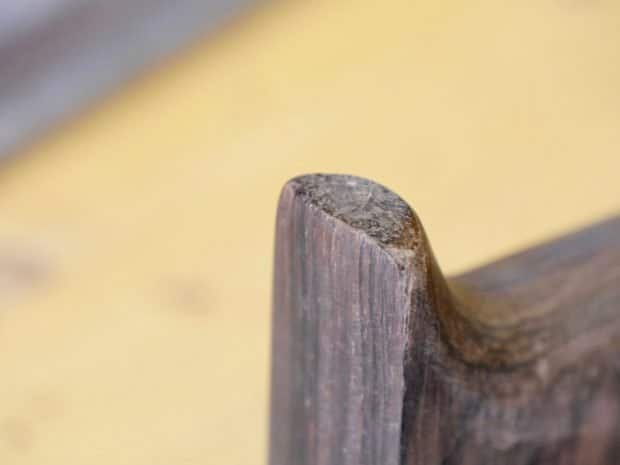
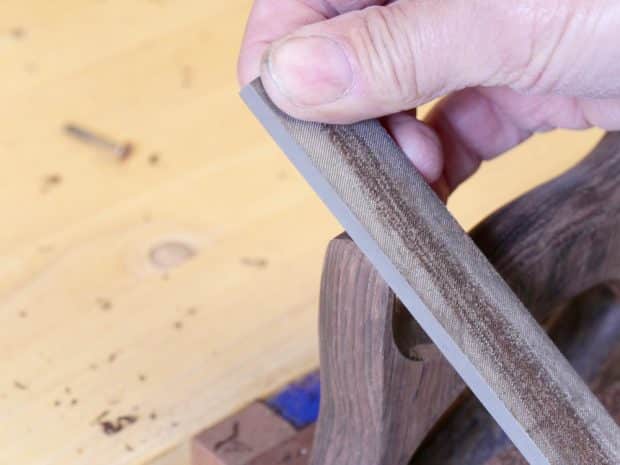
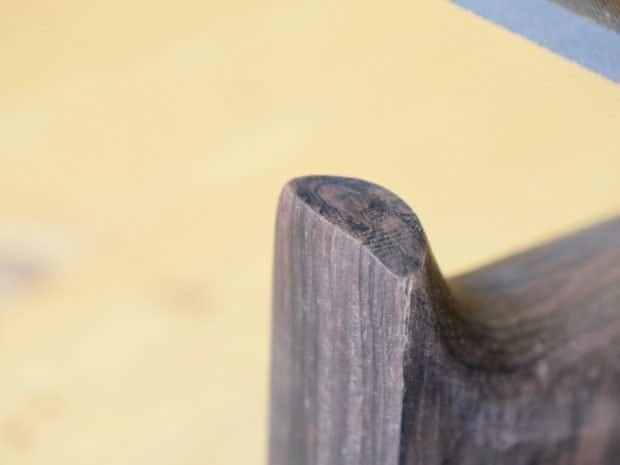
The brass studs polished up quickly the abrasive compound on the leather strop. It's up to the individual owner whether to reapply shellac, oil or some other wood finish to the wood. Rosewood is naturally oily and just using it will polish it out. You could just apply furniture wax and that would be enough for this wood.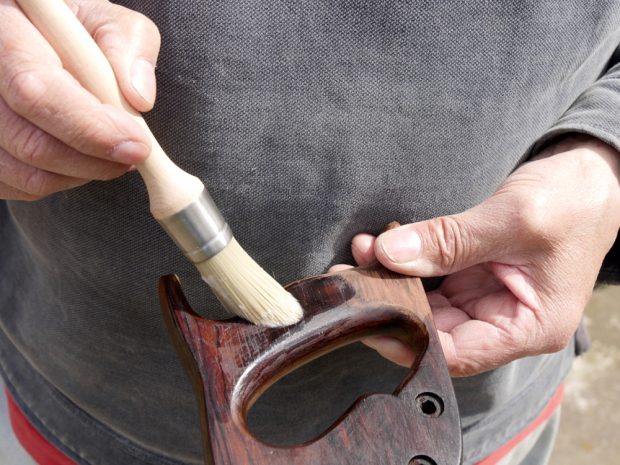
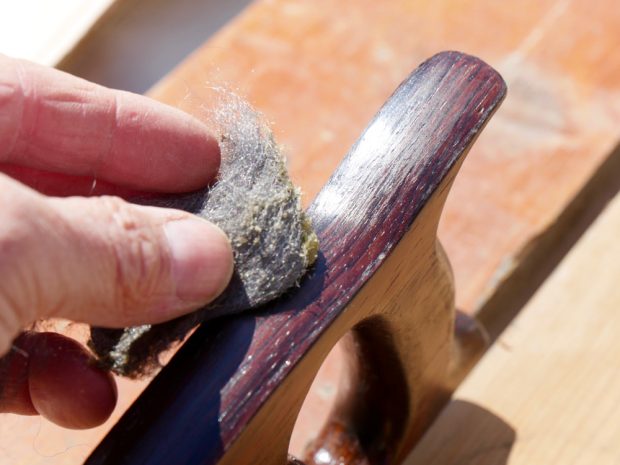
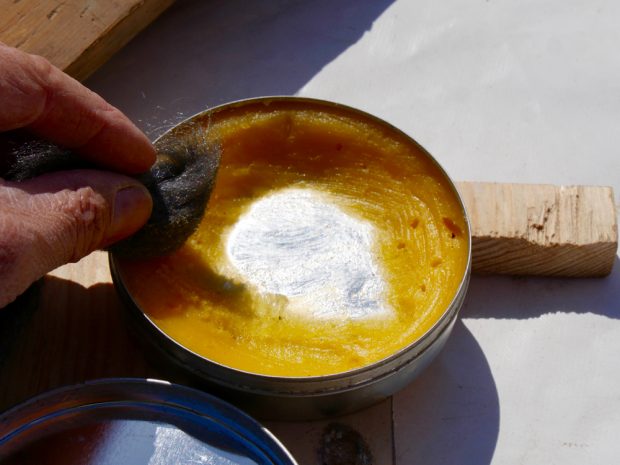
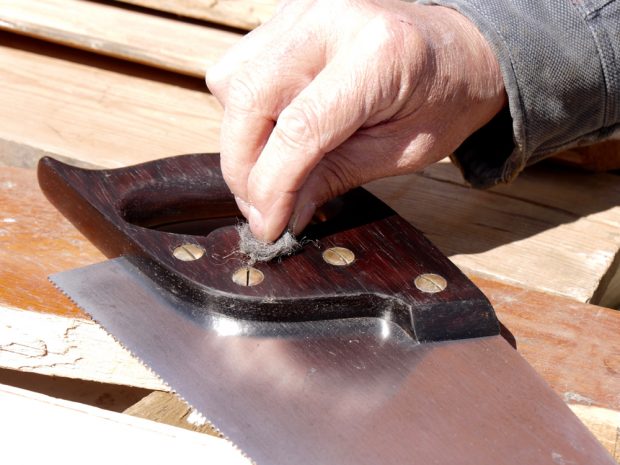
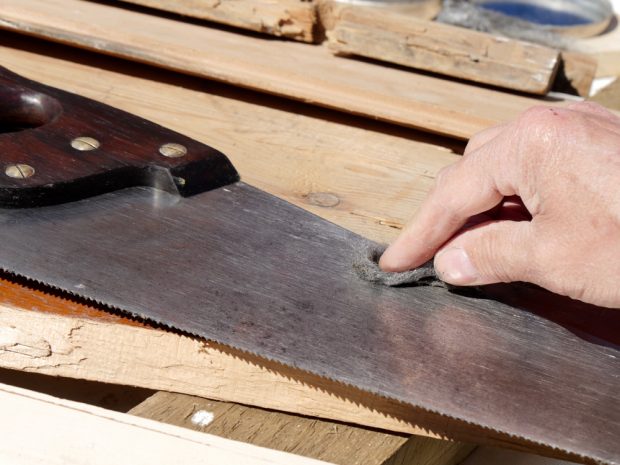
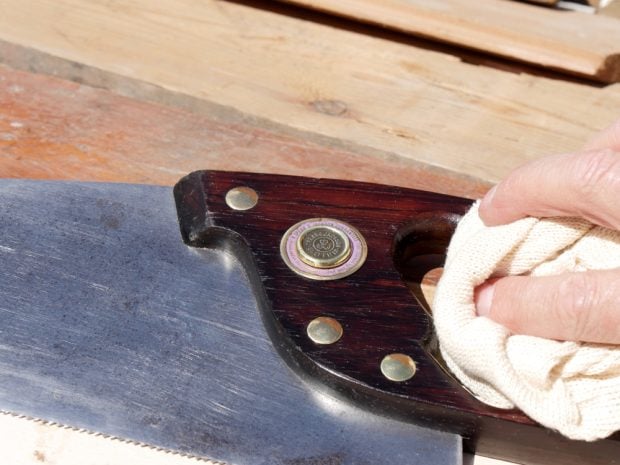
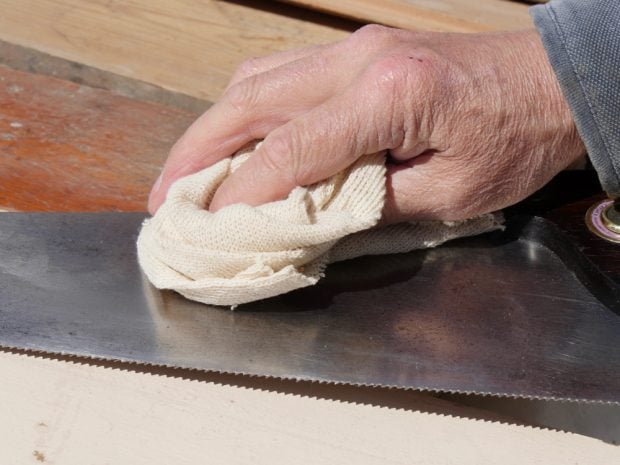 This S&J cost £33 on eBay and is utterly unused and very sharp as a crosscut. Before the 1970s we didn't need to write professional on the blade. Isn't that silly!
This S&J cost £33 on eBay and is utterly unused and very sharp as a crosscut. Before the 1970s we didn't need to write professional on the blade. Isn't that silly!
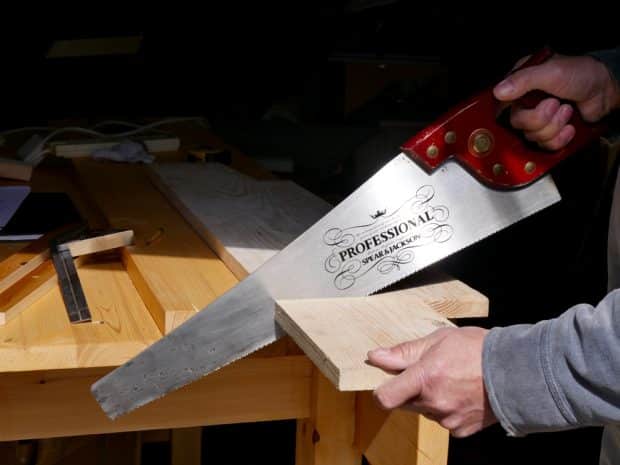
Finishing off the double century saw plate, even though severely dull, took only three strokes per gullet with a new Bahco saw file.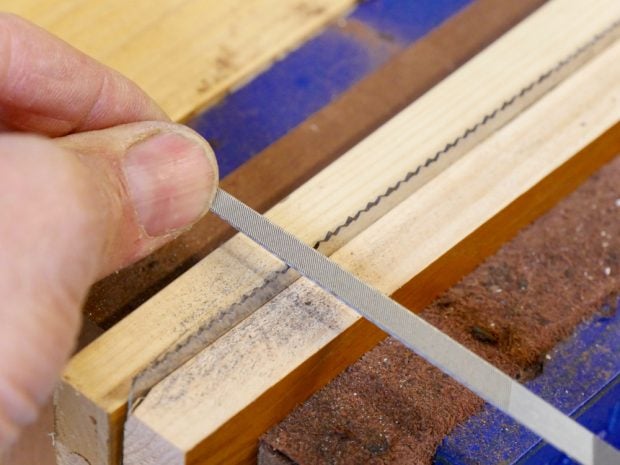 I reset the teeth to 8 PPI though it is a 10 PPI saw and then removed most of that with my hammer-anvil method.
I reset the teeth to 8 PPI though it is a 10 PPI saw and then removed most of that with my hammer-anvil method. 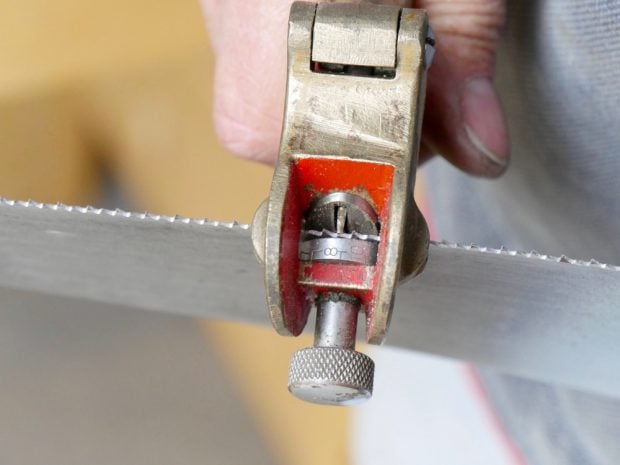 Now the saw cuts through wood like a hot knife through butter.
Now the saw cuts through wood like a hot knife through butter.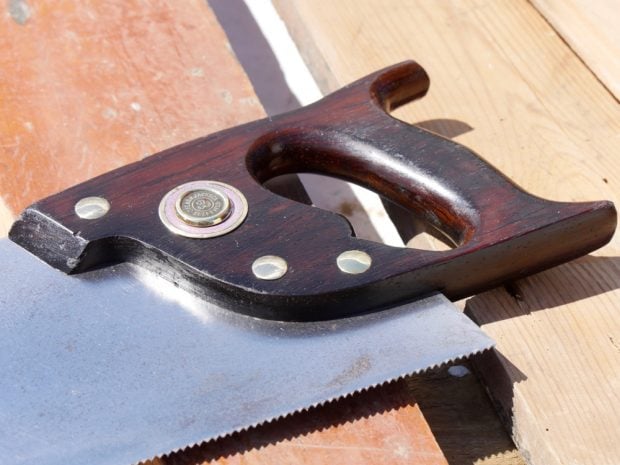
Now the saw will go back to work for another half century all being well.
How To Clean A Rusty Saw Blade
Source: https://paulsellers.com/2016/04/28348/
Posted by: mcgeethiped.blogspot.com

0 Response to "How To Clean A Rusty Saw Blade"
Post a Comment